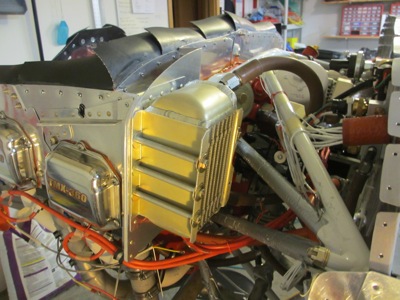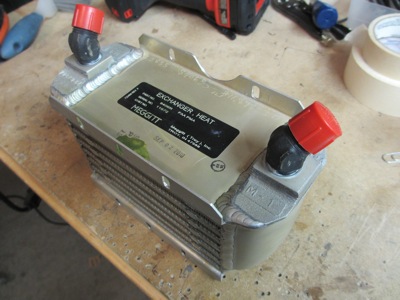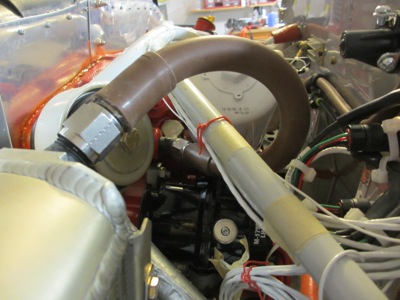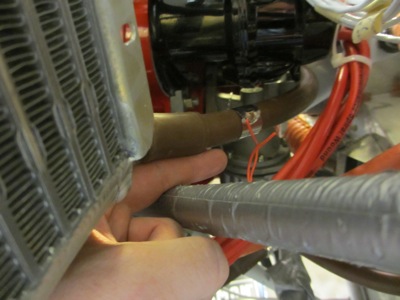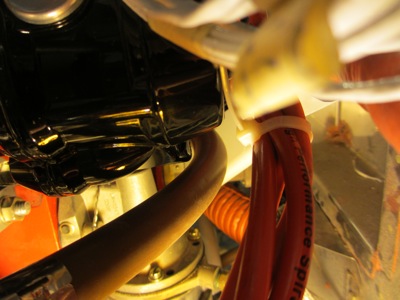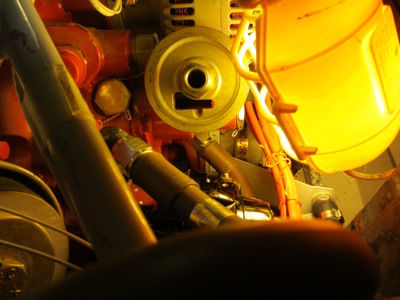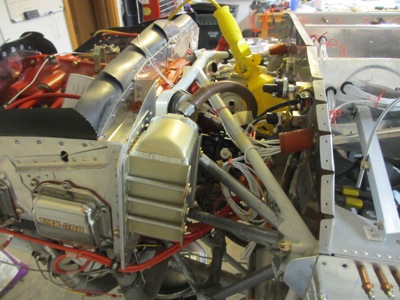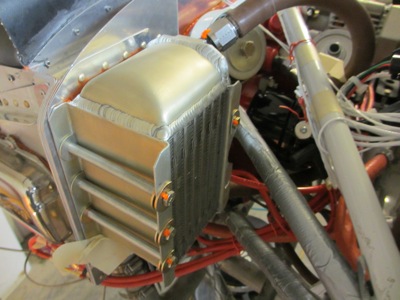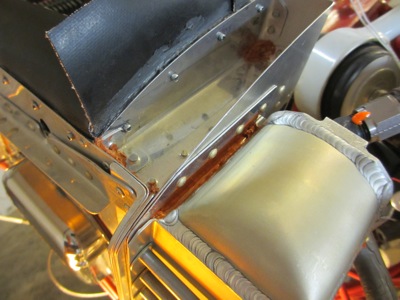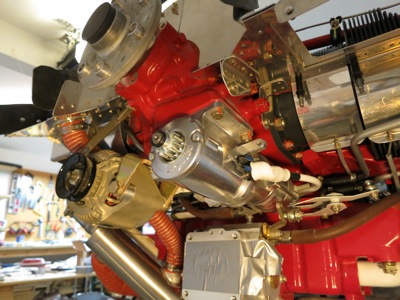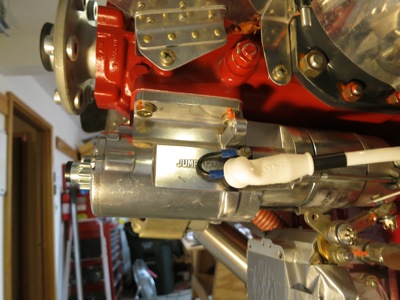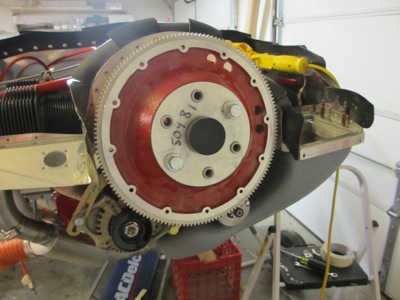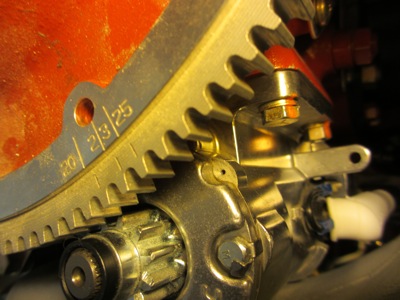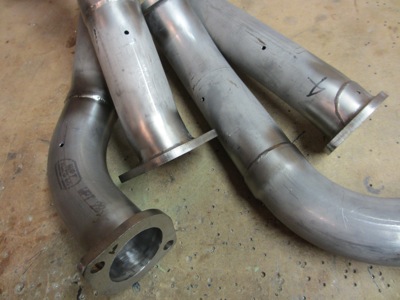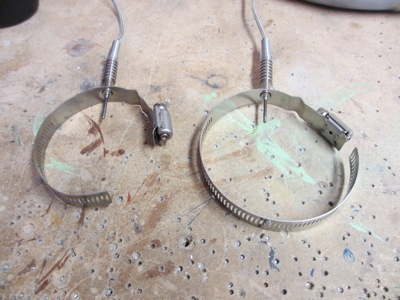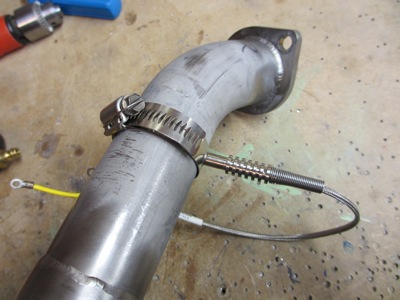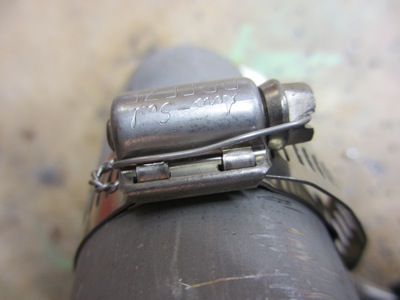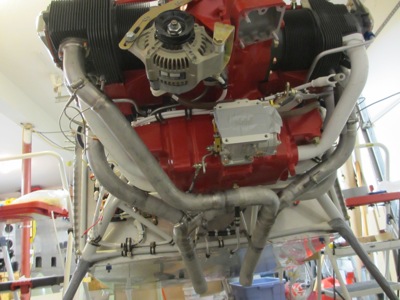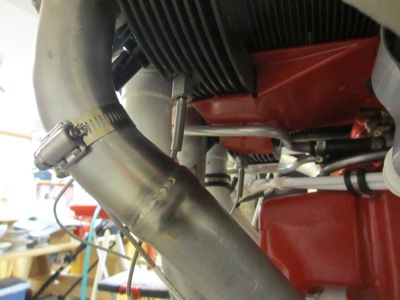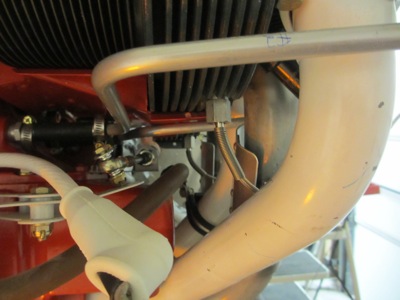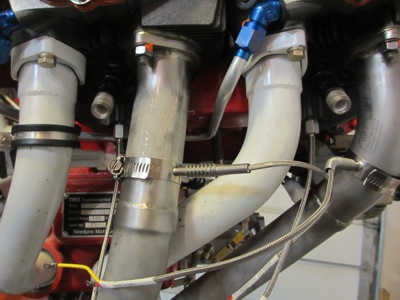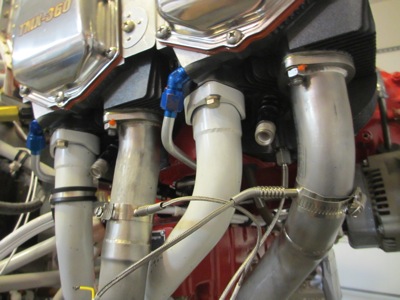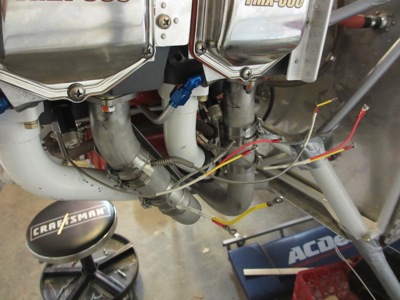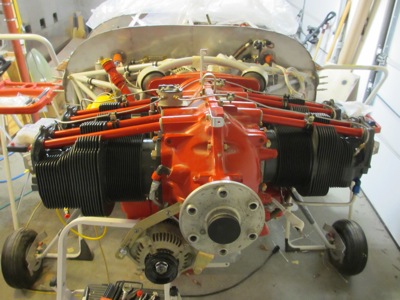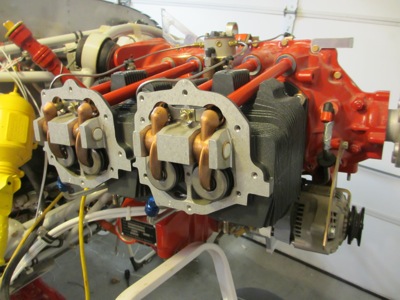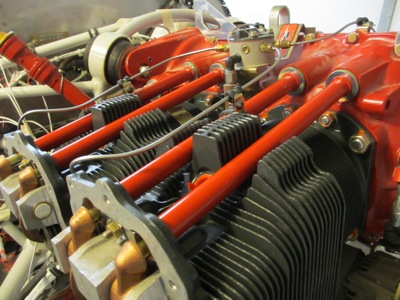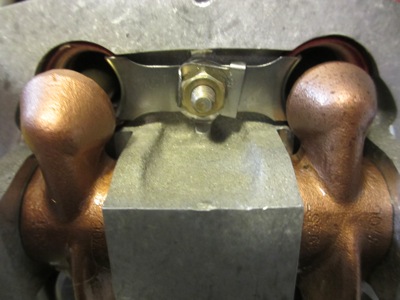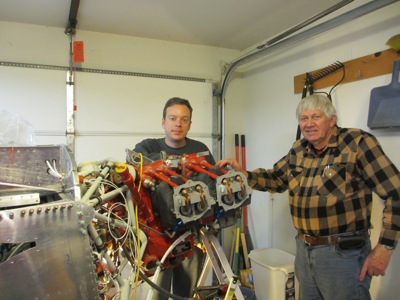Returning to the alternate air door, which needs a control so the pilot can open it if required. It all starts with a bracket, made of 1/8" aluminum and designed to fit in a very specific place:
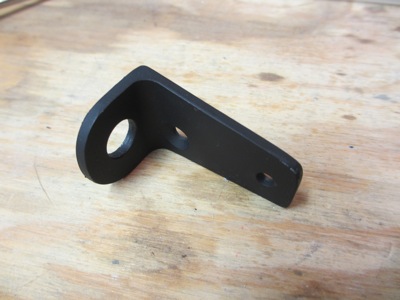
That place is the side of the throttle quadrant, attached using two of the existing mounting bolts:
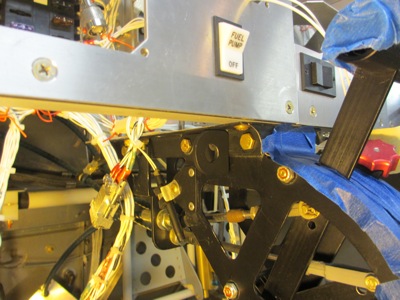
Locking push-pull cable housing installed in the bracket:
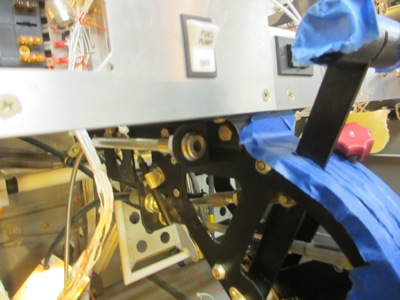
Here's what the cable knob looks like when it's in the "closed" (normal) position. I arranged things so the face is flush with the panel when it's not in use.
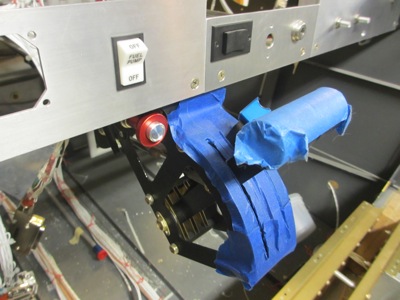
Marking and drilling the firewall for another cable passthrough fitting… this took some figuring in order to find the ideal routing:
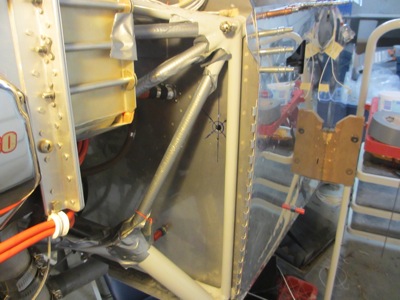
Just enough clearance between the engine mount tubes to cut, drill, and deburr. Duct tape is there to protect the engine mount from tool-induced scratches:
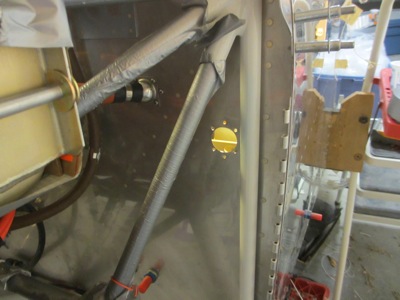
Eyeball fitting installed and cable sleeve in place:
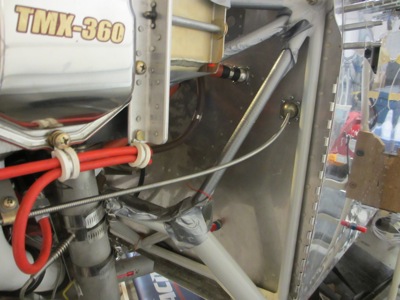
More custom-made brackets, this time from 4130 steel:
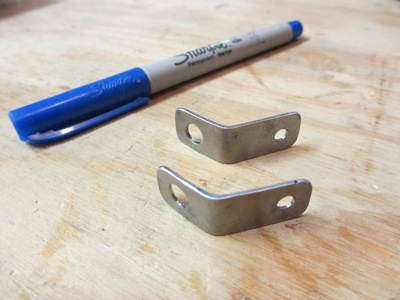
Primed and painted, with the paint baked on for durability (don't tell Mary I used her oven for airplane parts again).
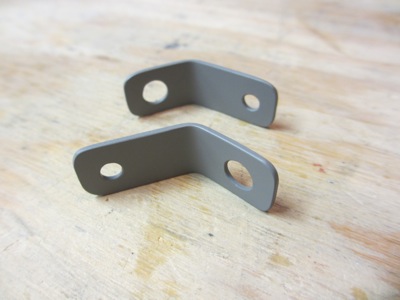
These brackets attach to the engine using a couple of bolts on the intake tubes, and support a pair of clamps around the cable sleeve:
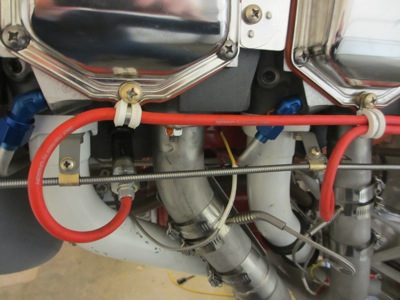
This routing is much simpler than the oddball idea shown in the plans, which I think would probably have conflicted with the mounting of the oil cooler anyway. Here the cable is just a straight shot to the front of the engine, with some slack at the aft end for when the engine moves around:
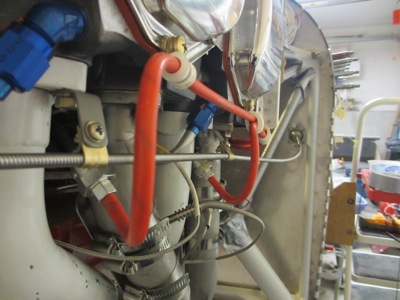
Here you can see that the cable runs well inside the loops formed in the ignition wire harness, and has plenty of clearance:
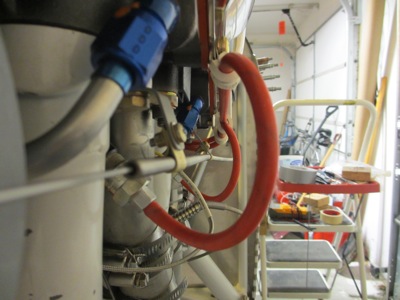
No problems at the aft end either, thanks to careful positioning of the firewall fitting:
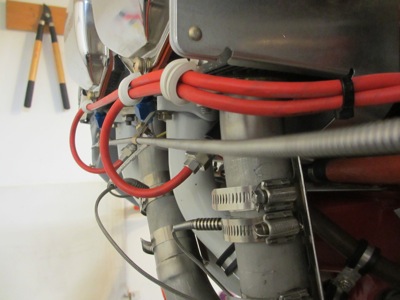
Next, we need a way to attach the cable to the door itself, so it will open when you pull on it. The plans suggest heating the cable with a torch and bending it around a screw. That seemed pretty lame to me, so instead I fabricated this little aluminum block on my milling machine. You'll see in a minute how it works…
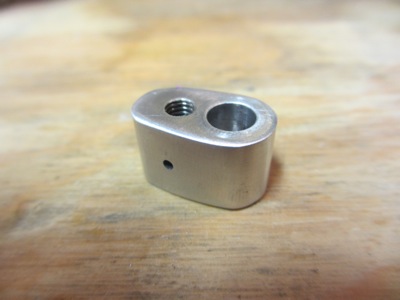
At the place on the door where the plans call for a simple screw and nut, with the cable hooked around it somehow, I instead fabricated a brass bushing that's captured securely between a pair of washers:
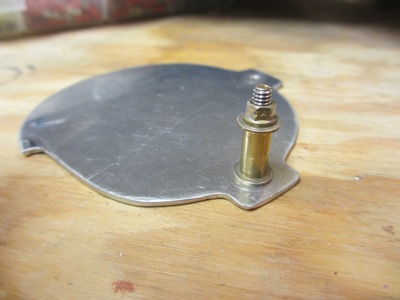
The bushing is just slightly longer than the width of the block, so the block can pivot freely on the bushing but is kept in place by the outer washer:
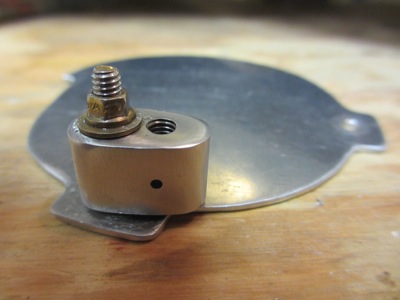
And now here's how the cable attaches to the block. The cable wire passes through the small hole, and is clamped between a pair of set screws which come in from either side. The principle is the same as the standard "cable B-nut", adapted to fit this application. Once I go to install everything for good, I'll use blue Loctite on the screws to keep them from backing out.
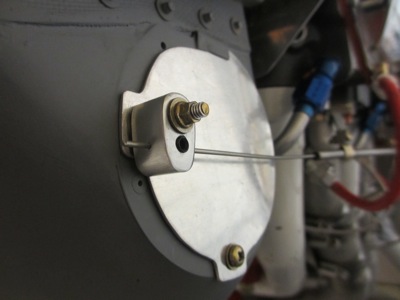
Alternate air door in the closed (normal) position:
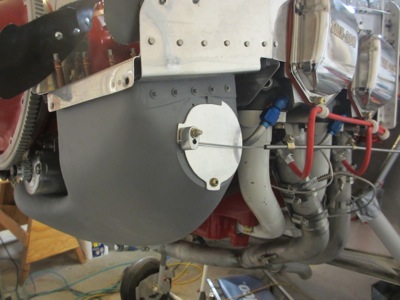
And here it is in the open (emergency) position:
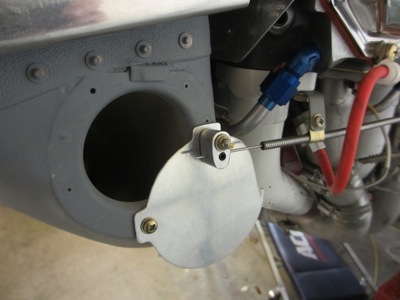
When the door is open and the knob is fully extended, it looks like it might interfere with the throttle lever, but it doesn't. Luckily I thought of that before I went to all this trouble.
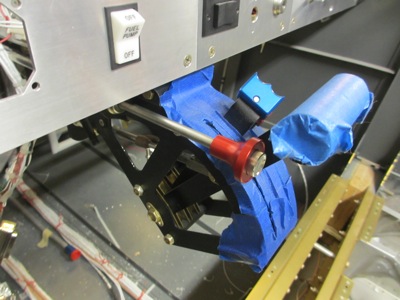
You can see from the above photos how it's unlikely you could close the door again, once opened, just by using the cable. The door doesn't want to slip under the little retaining tab at the top, hence why this is an emergency-only control that has to be reset via cowl removal once used. I don't particularly like that, since you can't test it before takeoff. I guess I'll put a "emergency use only" placard on it and hopefully never have to use it except at annual inspection time.
Update: See the next post for how I figured out how to work around this shortcoming.
